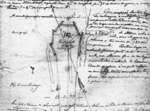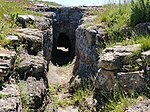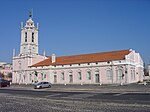Natural Monument of Carenque

The Natural Monument of Carenque is a natural monument in Belas, Sintra, Portugal. It contains more than one hundred dinosaur footprints and has one of the longest dinosaur tracks in Europe. The original footprints have been covered with soil after being molded onto latex, so the Monument has no pedagogical or tourist use. The Pego Longo (Carenque) dinosaur footprint deposit was discovered in 1986 by two Geology students from the Faculty of Sciences of the University of Lisbon, Carlos Coke and Paulo Branquinho, in a deactivated quarry located southwest of Belas. However, it was named after the neighboring town of Carenque. This monument consists of a set of subcircular and tridactyl footprints containing one of the largest tracks in Europe, with an extension of approximately 140 m (460 ft). It is possible to observe a fossil record with hundreds of dinosaur footprints from the beginning of the Upper Cretaceous on a track over 120 m (390 ft), of 2 herbivorous four-legged dinosaurs and tridactyl ichnites, possibly of bipedal carnivores.In this protected area, there is also the existence of the Necropolis of Carenque, which dates back to the Paleolithic period and the beginning of the Neolithic period.This monument, namely most of the main trail, was in danger of being destroyed by the Lisbon Regional Circular Road (CREL). The solution was to open tunnels so as not to destroy the track.
Excerpt from the Wikipedia article Natural Monument of Carenque (License: CC BY-SA 3.0, Authors, Images).Natural Monument of Carenque
Circular Regional Exterior de Lisboa (CREL), Queluz e Belas
Geographical coordinates (GPS) Address Website Nearby Places Show on map
Geographical coordinates (GPS)
| Latitude | Longitude |
|---|---|
| N 38.773888888889 ° | E -9.2561111111111 ° |
Address
Monumento Natural de Carenque (Jazida de icnofósseis de Carenque)
Circular Regional Exterior de Lisboa (CREL)
2745-298 Queluz e Belas
Portugal
Open on Google Maps









